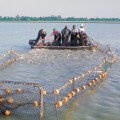Attracting new businesses is an exciting prospect for local communities, but expanding and retaining small and medium-sized enterprises (SMEs) has a higher return on investment. This is because existing companies do not need to be incentivized to move to the area, and they are more likely to be loyal to the community. They also pay economic dividends through taxes and job creation. To initiate a business retention and expansion strategy, leaders should collect qualitative data from entrepreneurs about their expansion plans and any challenges they face.
Economic development professionals can also help SMEs by providing access to loans and grants, helping them meet regulatory requirements, writing business plans, planning for succession, and connecting them with larger companies that make acquisitions in the region. The Mississippi Delta is home to the oldest music museum in the state, making it an increasingly important part of the growing tourist industry. The Mississippi Crossroads Consortium, led by Holmes Community College, is dedicated to developing a population of potential employees for employers looking for individuals who can demonstrate skills, keep up with the rapid pace of change, and show commitment to lifelong learning. The Southern Mississippi Workforce Solutions Alliance is researching, developing, and delivering education and training to citizens and industries in five community college service districts. The Tennessee Valley Authority (TVA) was created by Congress in 1933 and included several counties in northeastern Mississippi. The District of Columbia serves 18 counties in the Delta region by providing a collaborative nexus for agricultural, business, and professional leadership.
It also works to solve common problems through several committees focused on the economy, such as aquaculture, ginning and quality improvement of cotton, rice, and small grains. There are also four areas designated for local workforce development that are generally aligned with the structure of the state's planning and development districts. The Office of Management and Budget (OMB) defines micropolitan statistical areas as those with a population of at least 10,000 but less than 50,000 inhabitants, plus an adjacent territory that has a high degree of social and economic integration with the central area through daily travel. Six of the top 20 counties that specialize in these sectors belong to the Southcentral Mississippi Works (LWDA). This corridor speaks of the favorable business climate in Mississippi and the South in general. The goal of this facility is to provide a constant flow of highly specialized and technically competent people to work at advanced manufacturers in Mississippi.
The economic and labor analysis shows that the state is well-positioned to improve its total labor force participation rate by increasing the skills of its workers. It remains to be seen whether these investments will translate into self-perpetuating industrial growth predicted by the cluster model or have a significant economic or social impact on the state's large population living in poverty. Promoting economic development in northeastern Mississippi requires a comprehensive strategy that includes attracting new businesses as well as retaining existing ones. Leaders should collect qualitative data from entrepreneurs about their expansion plans and any challenges they face. Economic development professionals can help SMEs by providing access to loans and grants, helping them meet regulatory requirements, writing business plans, planning for succession, and connecting them with larger companies that make acquisitions in the region.
The Mississippi Crossroads Consortium is dedicated to developing a population of potential employees for employers looking for individuals who can demonstrate skills, keep up with the rapid pace of change, and show commitment to lifelong learning. The Tennessee Valley Authority serves 18 counties in the Delta region by providing a collaborative nexus for agricultural, business, and professional leadership. The Southern Mississippi Workforce Solutions Alliance is researching, developing, and delivering education and training to citizens and industries in five community college service districts. The OMB defines micropolitan statistical areas as those with a population of at least 10,000 but less than 50,000 inhabitants plus an adjacent territory that has a high degree of social and economic integration with the central area through daily travel. It remains to be seen whether these investments will translate into self-perpetuating industrial growth predicted by the cluster model or have a significant economic or social impact on the state's large population living in poverty.







